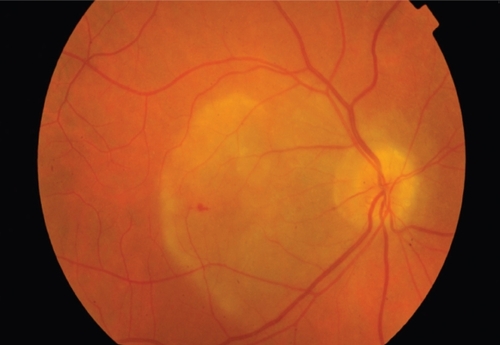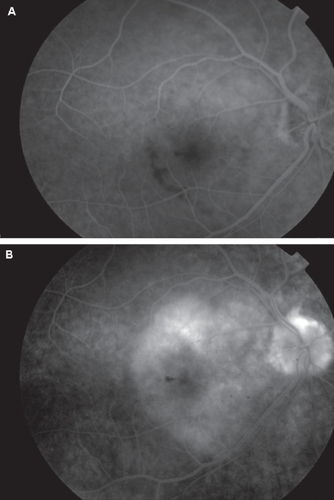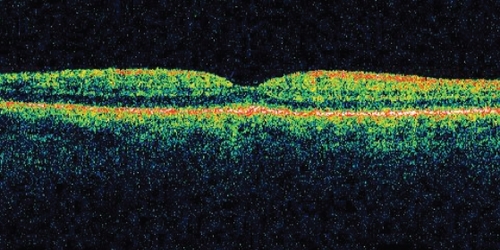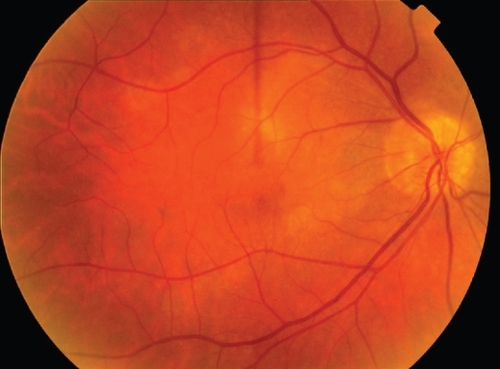Figures & data
Figure 1 Fundus appearance of the right eye at initial presentation. There was a larger yellowish placoid lesion, with a small splinter haemorrhage in the macular region and mild vitreous inflammation.

Figure 2 A: Fundus fluorescein angiogram demonstrating early hypofluorescence in the affected area. B: There was late staining with diffuse, non-progressive hyperfluorescence. There were no signs of a choroidal neovascular membrane.



